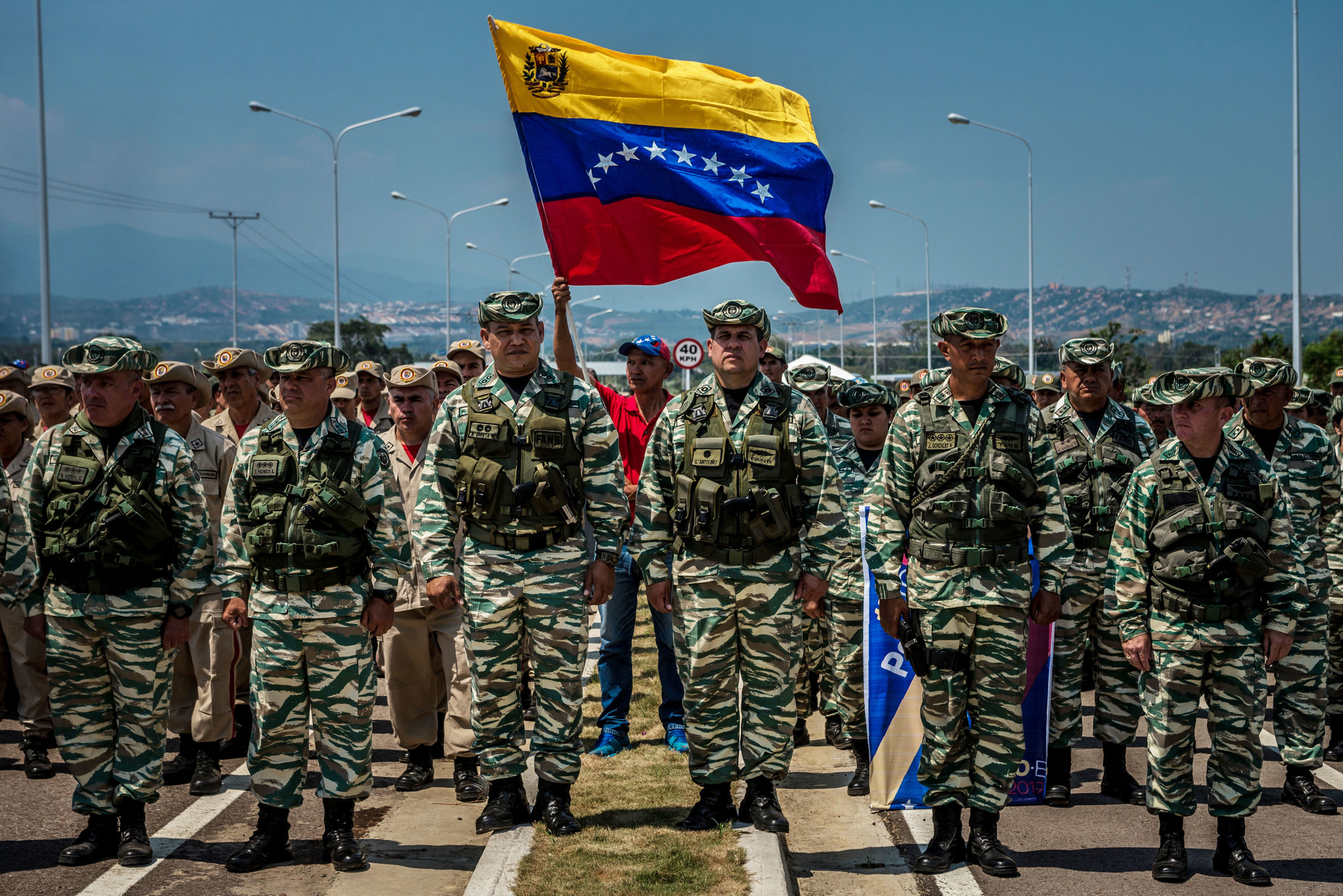International
Venezuela moves troops to the border with Guyana. Border crisis reignites

According to WSJ reports, Venezuela has begun preparing to make its case by force by moving light tanks, missile-equipped patrol boats, and armored vehicles to the border between the two countries. A new crisis is rapidly getting out of Biden’s hands.
The deployment, visible in satellite images made public Friday and in videos recently posted by the Venezuelan military on social media, represents a significant escalation in Caracas’ attempts to gain leverage over its neighbor’s new energy reserves. This comes despite a written agreement reached in December between Venezuelan President Nicolás Maduro and Guyanese President Irfaan Ali denouncing the use of force and calling for the establishment of a commission to resolve territorial disputes.

Photos emerged in the WSJ showing the establishment of military camps and fords for military use in the area.
Since the end of last year, the Venezuelan government, which has an army of 150,000 active soldiers and modern weaponry provided by its Russian ally, has increased its claims on Essequibo, a region covered mostly by jungle that makes up two-thirds of Guyana.
The deployment emerges as Exxon manages to increase Guyana’s oil production to 645,000 barrels per day, a level announced just three days ago. Guyana has self-defense forces of only 3 thousand men and a population of 800 thousand.
“We are not surprised by Venezuela’s bad faith,” Guyana’s Foreign Ministry said in a statement to the Wall Street Journal in response to questions about the military deployment. “We are disappointed, not surprised.”
On Wednesday, Venezuelan Defense Minister Vladímir Padrino accused Exxon of relying on the U.S. military for its security and using Guyana to its own advantage.
“They will receive a proportional and strong response in the maritime area that rightfully belongs to Venezuela,” he wrote in X. “The Essequibo is ours!” In reality, the issue is much more complex because partners in the exploitation of Guyana’s offshore oil resources are the Chinese CNOOC and Chevron, which operates in Venezuela
Maduro’s drills, coupled with a December referendum in which he said millions of Venezuelans approve of plans to seize Essequibo, have alarmed policymakers in the Biden administration, which is already grappling with devising a response to Venezuela’s alliances with Russia, Iran, and China.
In recent months, U.S. officials from the Defense Department and the White House have visited Guyana’s capital, Georgetown, for talks aimed at increasing cooperation. President Ali said his government will soon purchase U.S. helicopters, drones, and other defense equipment.
“Supporting Guyana to strengthen its defense capability while it continues to put a huge amount of oil on the market is something we are directly interested in,” Juan Gonzalez, Biden’s senior adviser, told Colombian reporters Monday, a day after meeting with Guyana’s president in Georgetown. “We certainly don’t want to exacerbate tensions, but we have a strategic relationship with Guyana.”
It will also be interesting to see what the response will be from Brazil, which, just recently, hosted a meeting between the two sides and had previously taken an interest in Guyana’s protection.
According to some analysts, Maduro does not want to invade Guyana but to force Exxon, Chevron, CNOOC, and Guyana to sit at the negotiating table and cede some of the wealth obtained from oil, which is enormous for the country’s small population. However, a crisis that seemed dormant is back in the news.






